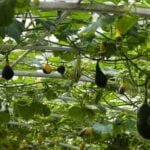Vegetable gardening by season is an incredibly rewarding and fulfilling activity that allows you to enjoy a continual harvest throughout the year. By understanding the unique planting and care needs of different vegetables during each season, you can maximize your garden’s productivity and success.
In this article, we will explore the benefits of gardening vegetables at different times of the year, as well as provide valuable tips and information for spring, summer, fall, and winter vegetable gardening. Additionally, we will discuss strategies for year-round gardening and offer practical advice for soil preparation, pest control, and maintenance to ensure a bountiful harvest.
Gardening vegetables at different times of the year offers a wide range of benefits that cater to both the plants and the gardener. Each season provides unique growing conditions that can be harnessed to optimize plant health and yield. Whether it’s sowing cool-weather crops in spring or protecting cold-weather vegetables in winter, understanding how to adapt your gardening practices to each season can lead to a more successful harvest.
In the following sections, we will delve into specific recommendations for spring, summer, fall, and winter vegetable gardening. From what to plant when to tips for success in varying weather conditions, this article aims to equip you with the knowledge and skills needed for thriving seasonal vegetable gardens. Whether you’re a beginner or experienced gardener, there’s always something new to learn about maximizing productivity in your garden throughout the year.
Benefits of Gardening Vegetables at Different Times of the Year
Vegetable gardening by season offers a wide range of benefits for both the gardeners and their produce. By understanding the unique advantages of gardening vegetables at different times of the year, individuals can maximize their harvest and enjoy a variety of fresh produce throughout the seasons.
One significant benefit of gardening vegetables at different times of the year is the ability to diversify your yield. Different seasons provide ideal conditions for growing specific types of vegetables, allowing gardeners to cultivate a wide range of produce throughout the year.
For example, cool-season crops like lettuce and carrots thrive in the spring and fall, while warm-season vegetables such as tomatoes and peppers flourish during the summer months. This diversity not only adds excitement to gardening but also ensures a continuous supply of fresh, homegrown produce.
In addition to diversifying your harvest, planting vegetables at different times of the year can also help improve soil health. Rotating crops throughout the seasons can prevent nutrient depletion and reduce pest and disease pressure, leading to healthier plants and higher yields.
Furthermore, certain crops like legumes can fix nitrogen in the soil, improving its fertility for future plantings. This practice not only benefits individual garden plots but also contributes to overall environmental sustainability by reducing reliance on synthetic fertilizers and promoting natural soil regeneration.
| Benefit | Explanation |
|---|---|
| Diversified Yield | Gardening vegetables at different times allows for a diverse range of produce throughout the year. |
| Improved Soil Health | Rotating crops prevents nutrient depletion and reduces pest and disease pressure while promoting natural soil regeneration. |
Spring Vegetable Gardening
When spring arrives, it’s the perfect time to start your vegetable garden. The soil is warming up and the threat of frost is diminishing, making it an ideal time to plant a variety of vegetables. Here are some popular vegetables to consider planting in the spring:
- Tomatoes
- Cucumbers
- Squash
- Peppers
- Lettuce
- Carrots
- Radishes
It’s important to consider the specific planting dates for each vegetable based on your local climate and frost dates. For example, tomatoes and peppers thrive in the warmth of summer, so they should be planted after the risk of frost has passed.
In addition to planting specific vegetables, spring is also a great time to focus on soil preparation. Turning over the soil and adding compost or organic matter can improve soil structure and fertility, creating an optimal environment for your vegetable garden to thrive.
Finally, spring is a time when pests can become more active, so be sure to implement pest control measures such as using row covers or organic sprays to protect your plants from potential damage.
Overall, spring vegetable gardening offers a fresh start and an opportunity to grow a wide range of nutritious and delicious vegetables. By carefully planning what to plant and when, preparing your soil, and implementing pest control measures, you can set yourself up for a successful growing season.
Summer Vegetable Gardening
During the summer months, vegetable gardening requires special attention and care to ensure a successful harvest despite the challenges of the heat. Here are some tips to help you make the most of your summer vegetable gardening:
1. Choose the right vegetables: Opt for heat-tolerant vegetables such as tomatoes, peppers, eggplant, okra, and sweet potatoes. These crops are better equipped to handle the high temperatures of summer.
2. Provide shade and moisture: Shield your plants from direct sunlight during the hottest parts of the day by using shade cloth or planting taller crops nearby to provide natural shade. Be sure to water your garden regularly, preferably in the early morning or late afternoon to prevent evaporation.
3. Mulch and maintain soil moisture: Apply mulch around your plants to help retain soil moisture and regulate soil temperature. This can also help suppress weeds and reduce water evaporation.
4. Monitor for pests and diseases: The warm weather of summer can also bring an increase in pests and diseases. Keep an eye out for signs of infestation or infection, and address any issues promptly to prevent them from spreading.
By following these tips, you can navigate the challenges of summer vegetable gardening and set yourself up for a bountiful harvest despite the heat. With proper care and attention, your vegetable garden can thrive throughout the summer months, providing you with an abundance of fresh produce to enjoy.
Fall Vegetable Gardening
As the weather starts to cool down and the days grow shorter, fall is the perfect time to extend your vegetable gardening harvest and prepare for the winter months. There are several benefits to fall vegetable gardening, including the ability to continue harvesting fresh produce well into the cooler months and ensuring that your garden is prepared for winter so that you can hit the ground running when spring arrives.
Extending Your Harvest
One of the key benefits of fall vegetable gardening is the ability to extend your harvest beyond the summer months. By planting certain cold-tolerant vegetables, such as kale, carrots, beets, and radishes, you can continue to enjoy fresh produce well into late fall and even early winter. Additionally, using techniques such as frost protection can help you further extend your growing season and enjoy a bountiful harvest.
Preparing for Winter
In addition to extending your harvest, fall vegetable gardening also provides an opportunity to prepare your garden for the winter months. This includes tasks such as cleaning up spent plants, adding organic matter to the soil, and preparing protective coverings for any plants that will overwinter in the garden. Taking these steps in the fall will help ensure that your garden is in good shape when spring arrives, saving you time and effort during the busy growing season.
Tips for Success
When it comes to fall vegetable gardening, there are a few key tips for success to keep in mind. First, be sure to select varieties of vegetables that are well-suited for growing in cooler temperatures. Additionally, pay attention to the first frost date in your area and plan your planting schedule accordingly.
Finally, keep an eye on weather forecasts and be prepared to provide protection for your plants if a cold snap is expected. With careful planning and proper care, fall vegetable gardening can be a rewarding experience that yields a plentiful harvest.
Winter Vegetable Gardening
When it comes to winter vegetable gardening, there are a variety of cold-weather crops that can thrive even in the chilly temperatures. Some popular choices for winter vegetables include kale, spinach, Brussels sprouts, and carrots. These crops are not only resilient to the cold but also become sweeter after a frost, making them perfect for harvesting during the winter months.
In addition to choosing the right crops, it’s important to implement protection methods to ensure a successful winter harvest. One common method is using row covers or cloches to protect plants from freezing temperatures. Another effective technique is mulching, which helps to insulate the soil and regulate its temperature. By taking these precautions, gardeners can extend their growing season well into the winter and continue enjoying fresh produce.
Furthermore, practicing crop rotation and succession planting can also be beneficial for winter vegetable gardening. Rotating crops helps prevent disease build-up in the soil, while succession planting ensures a continual harvest throughout the season. By following these strategies and protection methods, gardeners can make the most of their winter vegetable gardens and enjoy a bountiful yield all year round.
| Winter Vegetables | Protection Methods |
|---|---|
| Kale | Row covers or cloches |
| Spinach | Mulching |
| Carrots | Crop rotation and succession planting |
Year-Round Gardening
Succession Planting
One strategy for maintaining a continual harvest throughout the year is succession planting. This involves planting new crops as soon as the previous ones have finished producing, ensuring that there is always something ready to be harvested. For example, after harvesting your spring lettuce, you can plant heat-tolerant vegetables like peppers and tomatoes for the summer season. And once those are done producing, you can sow cool-weather crops such as spinach and kale for the fall.
Crop Rotation
Another important strategy for year-round gardening is crop rotation. By rotating your crops, you can prevent soil depletion and minimize the build-up of pests and diseases. Different plants have varying nutrient needs, so by rotating your vegetables, you can ensure that the soil remains healthy and fertile. Additionally, rotating crops can help break pest cycles since many pests are specific to certain plants.
Protective Structures
To extend your harvest into the winter months, consider using protective structures such as cold frames, row covers, or hoop houses. These structures help to create a controlled environment that protects your plants from harsh weather conditions. Cold frames are especially useful for growing cold-hardy crops like carrots, radishes, and winter greens during the winter months.
By implementing these strategies and techniques, you can enjoy a continuous supply of fresh vegetables throughout the year and make the most out of your vegetable gardening by season. Understanding when and what to plant will ensure a bountiful harvest regardless of the time of year.
Tips for Success
When it comes to successful vegetable gardening by season, proper soil preparation, pest control, and maintenance are crucial elements for a bountiful harvest. The health of your plants starts with the condition of your soil, so it’s essential to properly prepare it before each new growing season.
Start by testing the pH levels of your soil to determine if any adjustments are needed. Some vegetables may require more acidic or alkaline soil to thrive, so make the necessary amendments based on the test results.
In addition to soil preparation, pest control is another important aspect of successful vegetable gardening. Pests can wreak havoc on your garden and significantly impact your harvest. It’s important to regularly inspect your plants for any signs of pests and take appropriate measures to address the issue. This may involve using natural remedies, such as companion planting or organic pesticides, to deter pests without harming the environment or beneficial insects.
Finally, proper maintenance is key to ensuring a thriving vegetable garden throughout the seasons. Regular watering, weeding, and pruning are essential tasks that contribute to the overall health and productivity of your plants. Additionally, staying on top of plant nutrition by fertilizing as needed will help support strong growth and abundant yields. By incorporating these tips for success in soil preparation, pest control, and maintenance into your vegetable gardening routine, you can enjoy a fruitful harvest year-round.
Conclusion
In conclusion, vegetable gardening by season offers a rewarding and fulfilling experience for individuals looking to grow their own produce. The benefits of gardening vegetables at different times of the year are numerous, from enjoying a bountiful harvest to the satisfaction of knowing where your food comes from.
Spring brings the excitement of new growth and planting, while summer presents the challenge of maintaining crops in the heat. Fall allows for an extended harvest and preparation for winter, and winter offers the opportunity to grow cold-weather crops with protection methods.
By following the tips and strategies outlined in this article, gardeners can enjoy a year-round bounty of fresh produce. From soil preparation to pest control, successful vegetable gardening by season requires careful planning and maintenance. By staying proactive and attentive to the needs of your plants, you can ensure a successful harvest throughout the year.
Frequently Asked Questions
What Is the Best Month to Start a Vegetable Garden?
The best month to start a vegetable garden can vary depending on your location and climate. In general, starting in the early spring after the last frost date is a good time to begin planting your vegetable garden.
What Season Is Best for Vegetable Garden?
The best season for a vegetable garden also depends on your location, but generally, spring and summer are the prime seasons for growing vegetables. These seasons provide ample sunlight and warmer temperatures that most vegetables thrive in.
What Is a Good Layout for a Vegetable Garden?
A good layout for a vegetable garden involves considering factors like sunlight exposure, wind direction, and spacing between plants. Many gardeners opt for raised bed or square foot gardening layouts, which can maximize space and make tending to the garden easier. It’s also important to consider companion planting to promote healthy growth and discourage pests.

If you’re looking to get into vegetable gardening, or are just looking for some tips on how to make your current garden better, then you’ve come to the right place! My name is Ethel and I have been gardening for years. In this blog, I’m going to share with you some of my best tips on how to create a successful vegetable garden.





